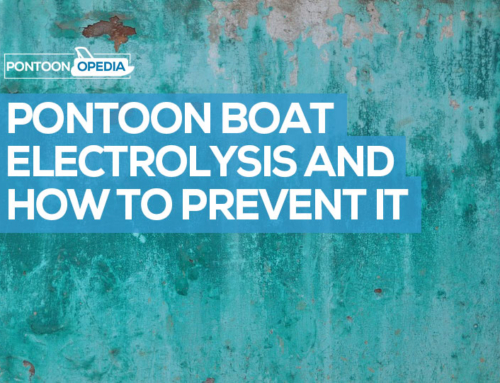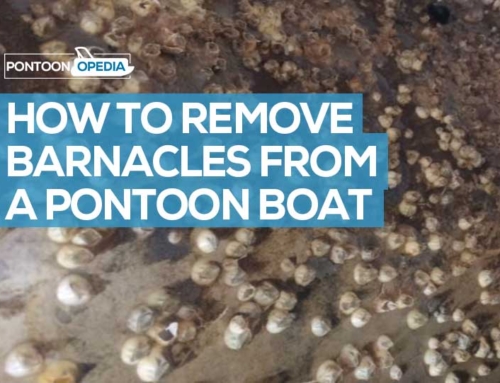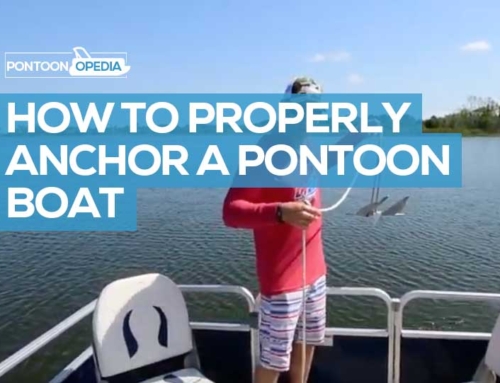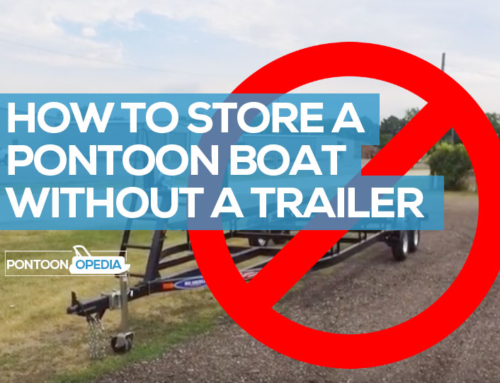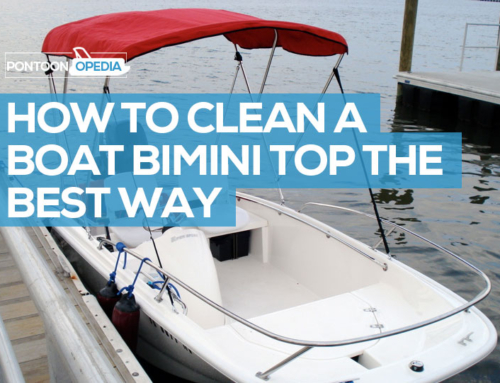A few days ago I published a guide on how to clean algae off pontoons which was really received with loads of comments on Facebook. But it actually made me think that wouldn’t it be far better to stop the algae sticking to the pontoons in the first place?
What I wanted to focus on today was the actual act of preventing it building-up in the first place.
If you can do so, it will limit the time you spend on cleaning, and also help to keep your boat looking great and holding its value.
If you have the money, space, and desire, you can get a pontoon lift to keep the boat out of the water when not in use. Another option would be pontoon sea legs, but they are very expensive and can impact on the performance of your boat.
So instead let’s get into some low-cost preventative measures with this guide. I am going to tell you how you can stop and prevent algae from sticking to your pontoon boat using some cheap and easy to use products.
By far the very best algae preventer for pontoon boats which is affordable is a product called VS721 (see it on Amazon). It is an anti-fouling bottom wax product massively popular with pontooners due to the low price and effective solution to sticking algae. It’s slippery, and algae can’t stick to it – genius!
Before I get into that though, let’s look at the most common solution, which is anti-fouling paint. It’s what most pontoon boat owners use but can be a little expensive and time-consuming to apply properly.
Anti-Fouling Paint
Anti-fouling paints for aluminum boats have been a little bit of an issue ever since tin-based paints were banned.
That means that the manufacturers have really had to up their game over the last few years, and thankfully there are some very good ant-fouling paints on the market which will help to stop algae sticking to aluminum pontoons.
But it can be expensive.
For example, I have a fellow pontooning buddy who was quoted $1,800 dollars to have the paint applied to his pontoons on a 25-foot boat.
However, it can be a good investment, as anti-fouling paint does work very well. In a fresh water environment, you can expect your coat to last for around 3 years, but always apply two coats for the best results with aluminum.
If you want to do it yourself without paying someone else thousands of dollars to do so, then there are plenty of options on Amazon. You’re going to need a lot of paint though, so calculate the volume required before you consider it a sound investment or not.
You can view the different anti-fouling paints on Amazon.
VS721 Boat Bottom Wax
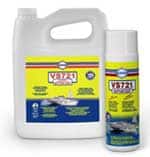
Having said that, you might want to apply both, with the VS721 over the anti-fouling paint. It’s best to test it out, which is easy enough as VS721 is simply a wipe on and off product.
Handy Hint: See how good it is by checking out the VS721 boat bottom wax reviews on Amazon
I’ve listed out the pros and cons below for the argument of VS721 versus anti-fouling paint, but in my mind any negatives are far outweighed by the positives.
Pros
- Costs less than anti-fouling paint
- It will work on raw aluminum, but ideally coat over Alumetron first
- Lasts for up to 10 years with a 5-year warranty
- Prevents algae growth and protects against zebra mussel, barnacles, and osmosis
- No need for sanding or additional painting
- Comes with UV protection
- Can improve fuel economy and increase your speed with reduced hull friction
- Easy to apply
- It doesn’t turn yellow over time like similar products
Cons
- If you already have old anti-fouling paint on the pontoons, you will need to strip that first
- Can chip off if you beach your boat
- It’s not going to work as well in salt water environments
How to Apply VS721 to Stop Algae Sticking
Once your pontoons are completely clean of algae, possibly by using the Algex spray (view on Amazon) that I really do recommend you can brighten them up with a product called Alumabrite (see Amazon prices). Your pontoons will look really shiny as a result.
Once polished, prepare the pontoons with Boat Clean Plus, and they should now look even better than they did before.
Next step will be to apply several coats of Alumetron (view on Amazon) with a cloth, and leave it for 4 days. This is the time that the Alumetron will need to cure. You must let it cure fully before taking the next step with the VS721 bottom wax.
After 4 days it’s time to apply the VS721 below the waterline of the pontoons. You simply wipe on two coats, and you’re good to go. It takes far less time than having to paint the pontoons.
It works so well because it is one of the slipperiest products I’ve ever seen, and algae simply can’t stick or grow on it.
What if You Already Have Anti-Fouling Paint?
As I mentioned in the pros and cons, if you already have older anti-fouling paint on the pontoons, then you will need to strip it off first before applying the VS721 product.
This is how you can strip off old anti-fouling paint:
- Wet sand with 600 to 800 grit paper
- Sand horizontally with the grain (to prevent streaks)
- Optionally you can then buff with buffing cream before applying VS721
Once that’s done you can follow the original instructions further up the page I gave for applying VS721 and the complimentary products that will help to protect your pontoon boat against algae.
What Else Can You Do to Prevent Algae Growth?
A couple of products that you might have heard off when researching how to prevent algae on your pontoon boat will be Algex and Alumetron, both of which I have already mentioned on this page.
It’s a common misconception in pontooning Facebook pages and forums that these two products will stop algae from sticking. I see so many people saying it will help to prevent it sticking.
This isn’t the case… but are still very useful in the fight against pontoon algae. Only the paint or VS721 will stop sticking and build-up.
Firstly Algex. This stuff is amazing for cleaning up algae after the event. So, if you already algae stuck to your pontoons and you want to shift it, then this is the stuff to use.
Handy Hint: I wrote a guide on how to clean algae off a pontoon using Algex. Click here to see how it’s done and how well it works.
As far as Alumetron goes, this is another excellent product, but what it does is simply make it harder for algae growth to attach and stick. It won’t prevent sticking altogether. You can find links to this, and the Algex spray further up the page.
How it works is that it helps to smooth out and fill the fissures in the aluminum pontoon, making them smoother. Algae do find it hard to stick to smoother surfaces, so there’s no doubt that it will help, but it won’t prevent algae attaching completely.
Want More Cleaning Tips?
Click here to read the best online guide on how to do a great pontoon polish job. It contains 5 simple to follow steps and instructions, with everything you need to use and how to do it.


